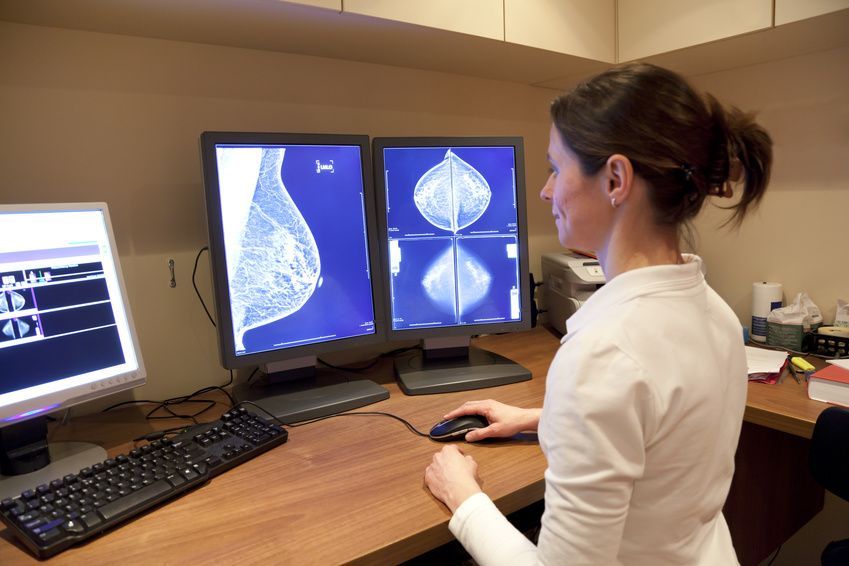
Women with Dense Breast Tissue have Higher Breast Cancer Rate, Says the Authors of a New Study

Doctors typically recommend breast cancer screenings and other types of health screenings based on a patient’s risk for specific diseases. Certain factors, such as age, genetics, early menstrual periods, late or no pregnancy, late menopause, obesity and a sedentary lifestyle can increase a woman’s risk of breast cancer, according to the Centers for Disease Control and Prevention (CDC).
The CDC and previous research have suggested that there is a higher cancer rate among women with dense breast tissue. Now a large, new study from Norway, published in the medical journal Radiology, confirms those findings.
Most of the previous studies had relied on subjective interpretations of radiologists, who use the American College of Radiology’s Breast Imaging Reporting and Data System (BI-RADS). While BI-RADS provides radiologists with guidelines, it still leaves room for variations in the way radiologists categorize the density of breast tissue. These variations in categorization are important when it comes to determining the association between the density of breast tissue and the rates of biopsy, recalls for a follow-up mammogram, and breast cancer.
The results of the new study demonstrates the use of a new automated technique and shows that there is an association between dense breast tissue and biopsy rates, recalls and increased odds of breast cancer.
About Breast Cancer and Breast DensityEnter heading here…
Cancer is a group of fast-growing unhealthy cells that can start in one part of the body and spread to other parts. Breast cancer can start in breast tissue then spread to the lymph nodes and other parts of the body.
Except for skin cancer, breast cancer is the most common cancer affecting American women, according to the American Cancer Society. Doctors diagnose about 266,120 women with breast cancer each year, and about 40,920 women die from the disease yearly. Fortunately, the number of women who died from breast cancer dropped 39 percent from 1989 to 2015. This significant drop is largely due to screening and early treatment.
Mammography is very good at finding breast cancer. The American College of Preventive Medicine says that the sensitivity of mammography ranges from 75 to 90 percent. That means mammography detects breast cancer 75 to 90 percent of the time.
Doctors often describe breast cancer and other types of cancer as either screen-detected cancer or interval cancer. Screen-detected cancers are those tumors that doctors find during routine screening with mammography or other screening tools. Interval cancers are those lesions that develop in between screenings, when a previous screening came back with normal results.
Researchers Use Automated Software to Assess Breast Tissue DensityEnter heading here…
Solveig Hofvind, PhD, from the Cancer Registry of Norway in Oslo and a team of researchers used automated software to classify mammographic density. They enrolled 107,949 women who were participating in BreastScreen Norway, a national program that offers breast screening every two years to women. The participants ranged in age from 50 to 69.
The team of scientists reviewed 307,015 digital screening examinations created from 2007 to 2015. They classified 28 percent of the breasts in the screening exams as dense.
Using the new automated technique, 28 percent of the screening exams classified the breast tissue as dense. The screen-detected cancer rates in this group of women were 6.7 participants for every 1,000 screenings, compared to 5.5 women per 1,000 exams for those who breast tissue was not dense.
The women with dense breasts had a 3.6 percent recall rate in women with dense breast tissue, as compared to 2.7 percent in women who did not have dense breasts. At 1.4 percent, the rate of biopsies was a little higher in women with dense breasts. In this study, the biopsy rate was only 1.1 percent in women without dense breasts.
The team noted that dense tissue in breasts could affect the sensitivity of mammography. In this study, mammographic sensitivity was 71 percent in women with dense breasts and 82 percent in women with non-dense breast tissue.
Among the participants in the study, the cancers detected at screenings were more advanced in the women with dense breast tissue than in women with non-dense breast tissue. This means the cancer was more likely to have had spread to nearby lymph nodes and other parts of the body. In this study, breast cancer had spread to lymph nodes in 24 percent of participants who had dense breasts, compared with 18 percent for those with non-dense tissue.
At 16.6 millimeters (mm) versus 15.1 mm, the average size of the screen-detected tumors was larger among women with dense breast tissue than in women whose breast tissue was not dense.
“We need well-planned and high-quality studies that can give evidence about the cost-effectiveness of more frequent screening, other screening tools such as tomosynthesis and/or the use of additional screening tools like MRI and ultrasound for women with dense breasts,” said the lead author in a press release. “Further, we need studies on automated measurement tools for mammographic density to ensure their validity.”




